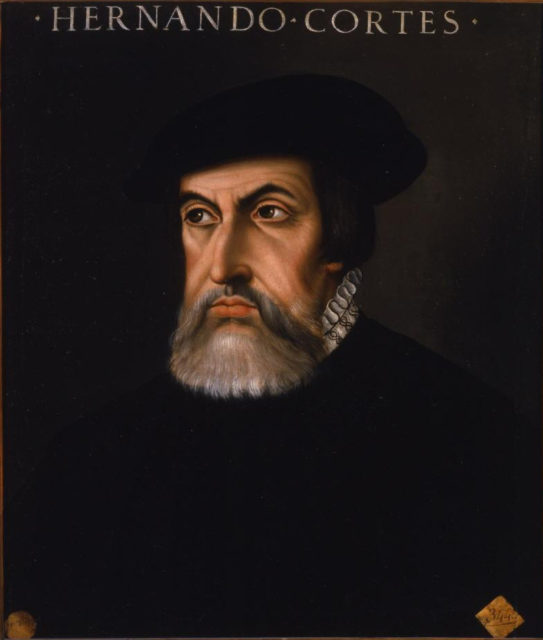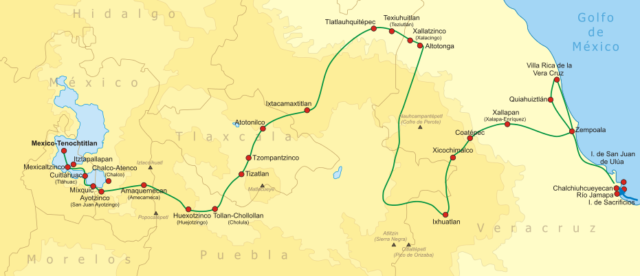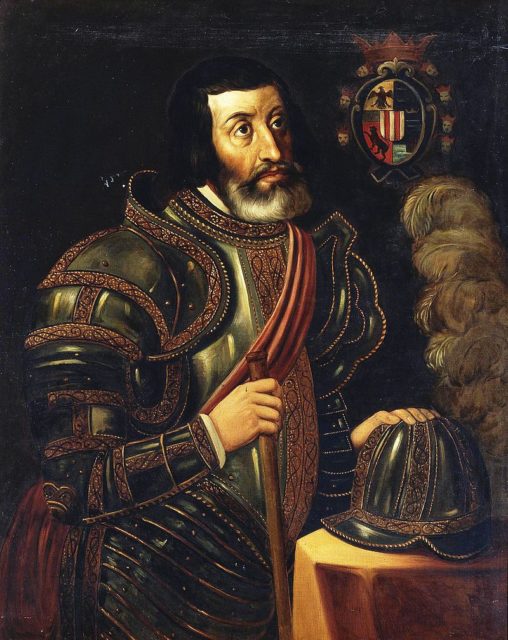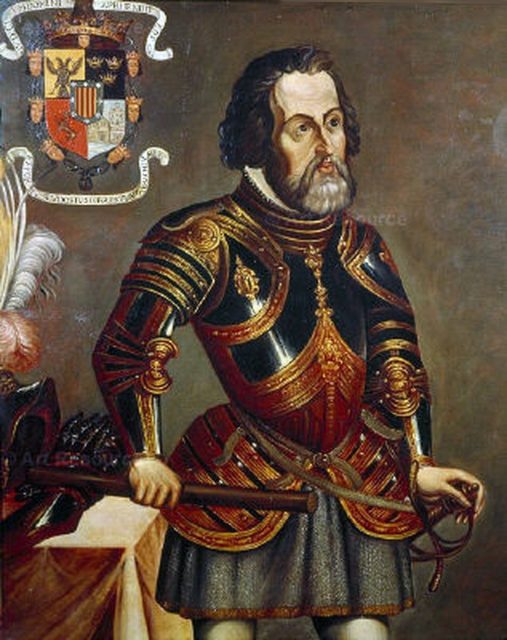Hernan Cortes, the conquistador captain, established a New World Empire with 600 men against a million Aztecs. His conquest in 1519 set in motion the destruction of one of the greatest ancient societies. The Aztecs were reported to be at the height of their civilization during the sixteenth century.
Then, Cortes landed on the shores of Tenochtitlan and ordered his ships dismantled – a sign that with his scant provisions of a few horses, canons, and light artillery, he was prepared to sacrifice his life to conquer the Americas.

His army was made up of men from Spain’s poorest towns who were seeking to escape their bleak lives; Spain’s army provided the opportunity for riches and adventure. Most of the 600 men were from the Spanish towns of Castile, Andalusia, and Extremadura. The men, who were in search of a better opportunity to make a name for themselves, saw the Spanish army as a route out of poverty as Spain intended to establish itself as one of the world’s super powers. Conquest of other lands promised them riches too enticing to pass up.
During that time, in their hometowns, they had no prospect of building a personal fortune. Regular work such as shoe-making was seen as lower class work. Most men were of lesser rank, and they likely would not inherit much, if anything at all, from their family estates. The army didn’t force anyone to enlist but provided the fast route to quick ascension in the ranks. Serving in the army also came with a nobility that they could not otherwise achieve; this proved too much for some to resist.

These young men risked life and limb in ambitious expeditions for riches, the assertion of religious conviction, and adventure. The men among them with some wealth were able to purchase the finest fighting equipment. But as it turned out they didn’t need that much equipment to fight the natives in the jungles of Mexico. The Aztecs were known to be brutal warriors, but their defenses and artillery were no matche compared to the weapons of the conquistadors. They were armed with the preferred Toledo steel swords, which could easily hack down enemies with a single slash. They had come well prepared for war, but it was soon evident that the conquistadors didn’t need much. The most common armor was thick leather clothes called (escuapil) which were very protective. Even though they packed heavy metal chest plates (called morions), they were not needed.
Most men wore the heavy padded escape as it was sufficient defense. The other artillery equipment such as the harquebuses, and crossbows, proved too heavy and slow to reload. Although it was effective at taking down one enemy at a time, it was not necessary.

The conquistadors were religious men of faith and believed that the Aztecs needed to have their savage ways corrected. The Aztec practices appalled the Spaniards, and the conquistadors were determined to convert the culture to Christianity by any means necessary. This included using the sword to spread the Gospel. Many stories of the conquistadors’ brave conquest had been recreated through song, dance, and story-telling. One such famous story is a romance called the Amadis de Gaula – a love story of a brave soldier looking for his identity and true love. The reality of the entire campaign is that it was a bloody affair and a lot of people were killed. This didn’t stop Hernan Cortes who, to his credit, was a very skilled leader and conqueror. His horsemen and soldiers were also very skilled at their jobs under his leadership; they were able to skilfully use their lances while on horseback and were well protected by their armor.
Hernan Cortes was undoubtedly a great leader, however, he needed trustworthy captains to help him in his conquest. Hernan Cortes was aided in his conquest of the Americas by the following captains:
The youngest of his captains was Gonzalo de Sandoval. He was considered to be inexperienced because of his youth, but he displayed great leadership. Through him, Cortes won many conquests without resorting to heavy battle. Only in his twenties, de Sandoval displayed the characteristics that made him Cortes’ go-to person for the most challenging expeditions. During these expeditions, he displayed his bravery, intelligence, and loyalty that endeared him to Cortes and made him an indispensable person in Cortes’ court.

Another of Cortes’ trusted captains was Cristobal de Olid. He was nothing like de Sandoval, and didn’t display much diplomacy. De Olid was an all-action leader of his troops. He was described as brave, brutish, and not too bright; the right type of person when force was required. But he showed too much ambition and eventually went rogue, breaking ranks with Cortes’ army. He decided to go on his own after Cortes sent him to conquer Honduras, and so Cortes sent another expedition after him.
One of Cortes’ most well-known captains was Pedro de Alvarado. De Alvarado proved himself as an able captain. However, he was too impulsive and undertook certain conquests without the approval of Cortes. This is evident during the Temple Massacre, which occurred in Cortes’ absence. De Alvarado was known to have taken part in the conquests of Peru and the southern lands of Maya after the fall of the Aztec’s empire in Tenochtitlan.

Cortes had to trust his men, and one of his most trusted captains was Alonso de Avila. It is known that although Cortes didn’t like de Avila because he spoke his mind, de Avila was a principled man and Cortes did respect him. He respected de Avila so much he made him the treasurer since he knew he was good with figures. He was tasked with ensuring the King’s fifth was taken care of. Another of his good qualities was that he was an honest man and this made him respected by Cortes, About Education reported.
The expedition to the Americas was a lengthy, bloody conquest. Not only were the Aztecs reduced in number but Cortes’ army suffered significant blows; almost all of his 600 men were killed. Those that survived were badly wounded, and the others either returned to Spain or left for the Caribbean. But Cortes was fortunate, as he received reinforcements just as the outcome seemed bleakest. A good example of this was when he overcame a threat in May of 1520, by Panfilo de Narvaez. Narvaez was sent to bring Cortes under control but was defeated instead; his remaining men joined Cortes, and it seemed that Cortes was always fortunate like this.

Another example is when the survivors of Juan Ponce de Leon’s expedition joined Cortes. The disastrous trip to Florida proved fruitful for Cortes, who at the time laid siege at Tenochtitlan, as the survivors were added to Cortes’ ranks.
Here is another story from us: The Black Legend was propaganda that demonized Spain, Spanish people and Spanish culture all around the world
Another factor which worked in Cortes’ favor was when rumors spread of Aztec gold – this created a stir, and many flocked to Cortes’ aid in the search of glory, land, and wealth.
